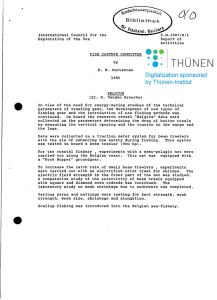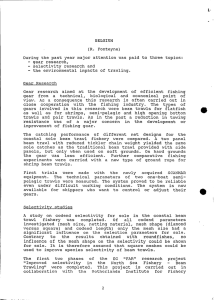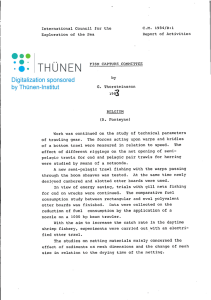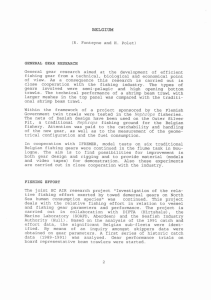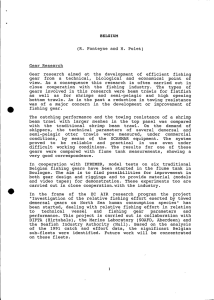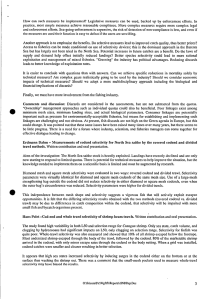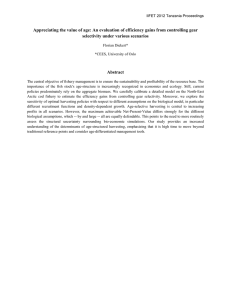' FISH CAPTURE CDHHITTEE •
advertisement
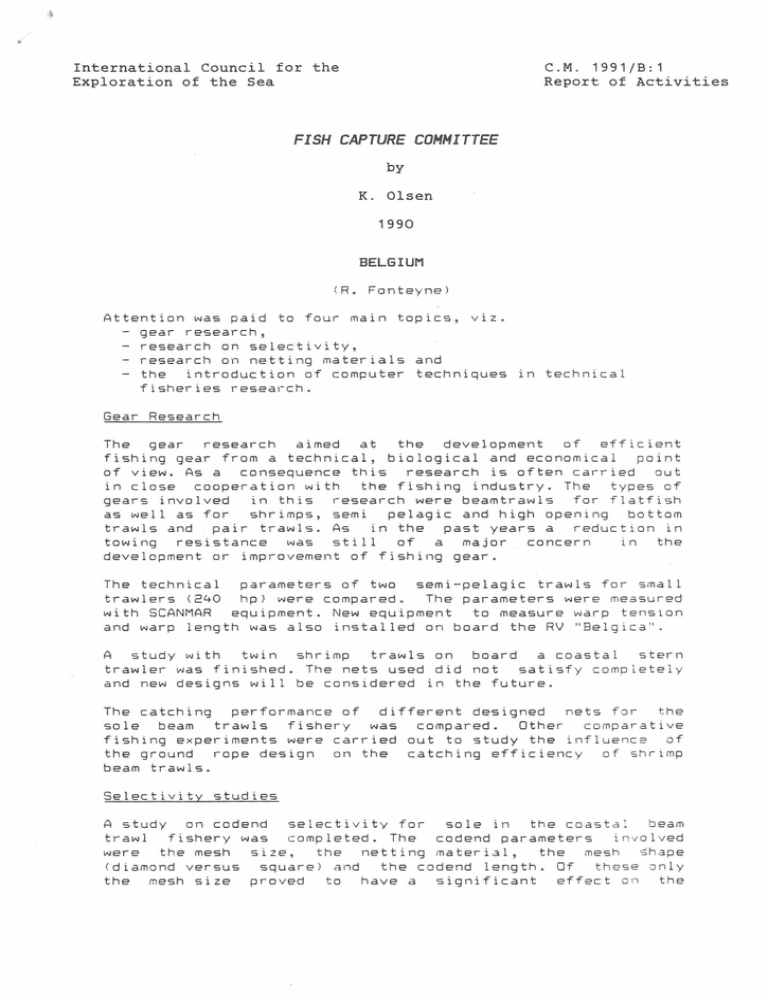
' • International Council for the Exploration of the Sea C.M. 1991/8:1 Report of Activities FISH CAPTURE CDHHITTEE by K. Olsen 1990 BELGIUM (R. Fonteynel Attention was paid to four main topics, viz. gear research, research on selectivity, - research on netting materials and the introduction of computer techniques in technical fisheries research. Gear Research The gear research aimed at the development of efficient fishing gear from a technical, biological and economical point of view. As a consequence this research is often carried out in close cooperation with the fishing industry. The types of gears involved in this research were beamtrawls for flatfish as well as for shrimps, semi pelagic and high opening bottom trawls and pair trawls. As in the past years a reduction in towing resistance was still of a major concern in the development or improvement of fishing gear. The technical parameters of two semi-pelagic trawls for small trawlers <240 hpl were compared . The parameters were measured with SCANMAR equipment. New equipment to measure warp tension and warp length was also installed on board the RV "Eelgica". A study with twin shrimp trawls on board a coastal stern trawler was finished. The nets used did not satisfy completely and new designs will be considered in the future. The catching performance of different designed nets for the sole beam trawls fishery was compared. Other comparative fishing experiments were carried out to study the influence of the ground rope design on the catching efficiency of shrimp beam trawls. Selectivity studies A study on codend selectivity for sole in the coastal beam trawl fishery was completed. The codend parameters involved were the mesh size, the netting material, the mesh ~hape <diamond versus square) and the codend length. Of these only the mesh size proved to have a significant effect on the - 2 - selectivity for sole. Contrary to the results obtained with roundfishes, no influence of the mesh shape on the selectivity could be shown for sole. As a consequence further selectivity research will emphasize on the use of square meshes to improve species selectivity. This problem is also the subject of an EC cooperative research project <FAR-program DG XIV> with RIVO in IJmuiden and Seafish in Hull. The methodolog y of selectivity experiments was studied during several research cruises with the RV "Belgica". In these experiments use was made of a twin beam trawl consisting of two four meter beam trawls rigged to an 8 m beam. The covered codend method was compared with the twin trawl method. In these experiments special attention was paid to the masking effect occurring in the covered cod end method. Netting materials The research on netting materials concentrated on the shrinkage of netting due to the absorption of bottom sediments. A new experimental method permits to control the tension on the netting sample during testing. Nettings of different materials and construction were tested. Dependent on the tension on the netting CO, 2 or 4 kgf per mesh), the nature of the sediment !sand or mudl and the yarn characteristics !multi or monofilaments, twisted or braided), mesh size reductions of up to 6 % were noted. Computer techniques The application of computer techniques in technical fisheries research was continued. A computer program for the analysis of data from selectivity experiments was improved. A database of technical characteristics of fishing gears used in the Belgian fleet was compiled. PLANCHALUT software is used to store, edit and modify trawl specifications and to plot the net plans. tension measurements and from SCANMAR gear Data from warp control sensors can now be stored on disk for later analysis. to handle the large number Work is going on fishing grounds operated obstacles on the fishermen. of by data of Belgian
